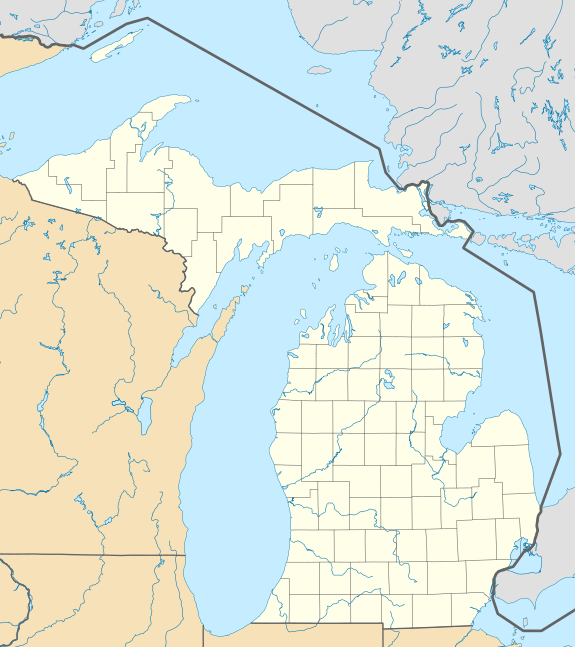Juntunen Site
|
Juntunen Site | |
  | |
| Location | Western tip of Bois Blanc Island[1] |
|---|---|
| Coordinates | 45°49′0″N 84°35′0″W / 45.81667°N 84.58333°WCoordinates: 45°49′0″N 84°35′0″W / 45.81667°N 84.58333°W |
| Area | 2 acres (0.81 ha) |
| NRHP Reference # | 78001504[2] |
| Added to NRHP | March 21, 1978 |
The Juntunen Site, also known as 20MK1, is an archaeological site located on the western tip of Bois Blanc Island.[3] It was listed on the National Register of Historic Places in 1978.[2]
Description
The Juntunen site is located on a low sand beach about 600 feet from and 17 feet above the current lakeshore.[3] The site was a large seasonal fishing camp[4] covering approximately 2 acres (0.81 ha).[2] It was likely a seasonal fall fishing village similar to the nearby Scott Point Site.[5] The site also contains five ossuaries, plus an infant burial and additional remains collected from the surface.[4] The site was used during the Late Woodland period, probably over a period of time between 900 and 1400 AD.[6] The burials primarily dated from 1200 to 1400 AD.[4] The frequent but seasonal occupation of the site led to a stratified layering of archaeological remains at the site, consisting of up to 25 separate layers.[6]
History
The Juntunen Site was discovered in 1932 by Robert Braidwood of the University of Michigan, who found human remains eroding from the surface of a group of mounds.[4] Excavations were carried out over the next few years. Mr. Charles Juntunen, the property owner of the site, discovered more remains in 1959 while bulldozing a road. Juntunen contacted The University of Michigan, and the University's Alan McPherron and James Griffin conducted multiple excavations.[4]
References
- ↑ The NRIS gives the location of the Juntunen site as "address restricted;" however, McPherron identifies the location as "on the western tip of Bois Blanc Island." Geocoordinates are approximate.
- 1 2 3 National Park Service (2010-07-09). "National Register Information System". National Register of Historic Places. National Park Service.
- 1 2 Charles Edward Cleland (1966), The prehistoric animal ecology and ethnozoology of the upper Great Lakes Region: Volume 29 of Anthropological papers, University of Michigan Museum of Anthropology, p. 157
- 1 2 3 4 5 Sherry Hutt (November 22, 2011), Notice of Inventory Completion: University of Michigan Museum of Anthropology, Ann Arbor, MI (FR Doc. 2011-30626)
- ↑ Charles E. Cleland (October 1982). "The Inland Shore Fishery of the Northern Great Lakes: Its Development and Importance in Prehistory". American Antiquity. 47 (4): 761–784. doi:10.2307/280281.
- 1 2 Susan R. Martin (1999), Wonderful Power: The Story of Ancient Copper Working in the Lake Superior Basin, Wayne State University Press, pp. 176–180, ISBN 0814328431
Further reading
- Alan McPherron (1967), The Juntunen site and the late woodland prehistory of the Upper Great Lakes area. Volume 30 of Anthropological papers – University of Michigan, University of Michigan Museum of Anthropology